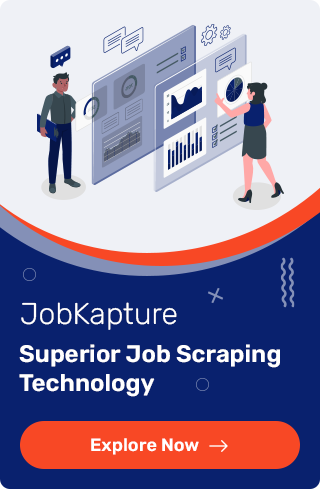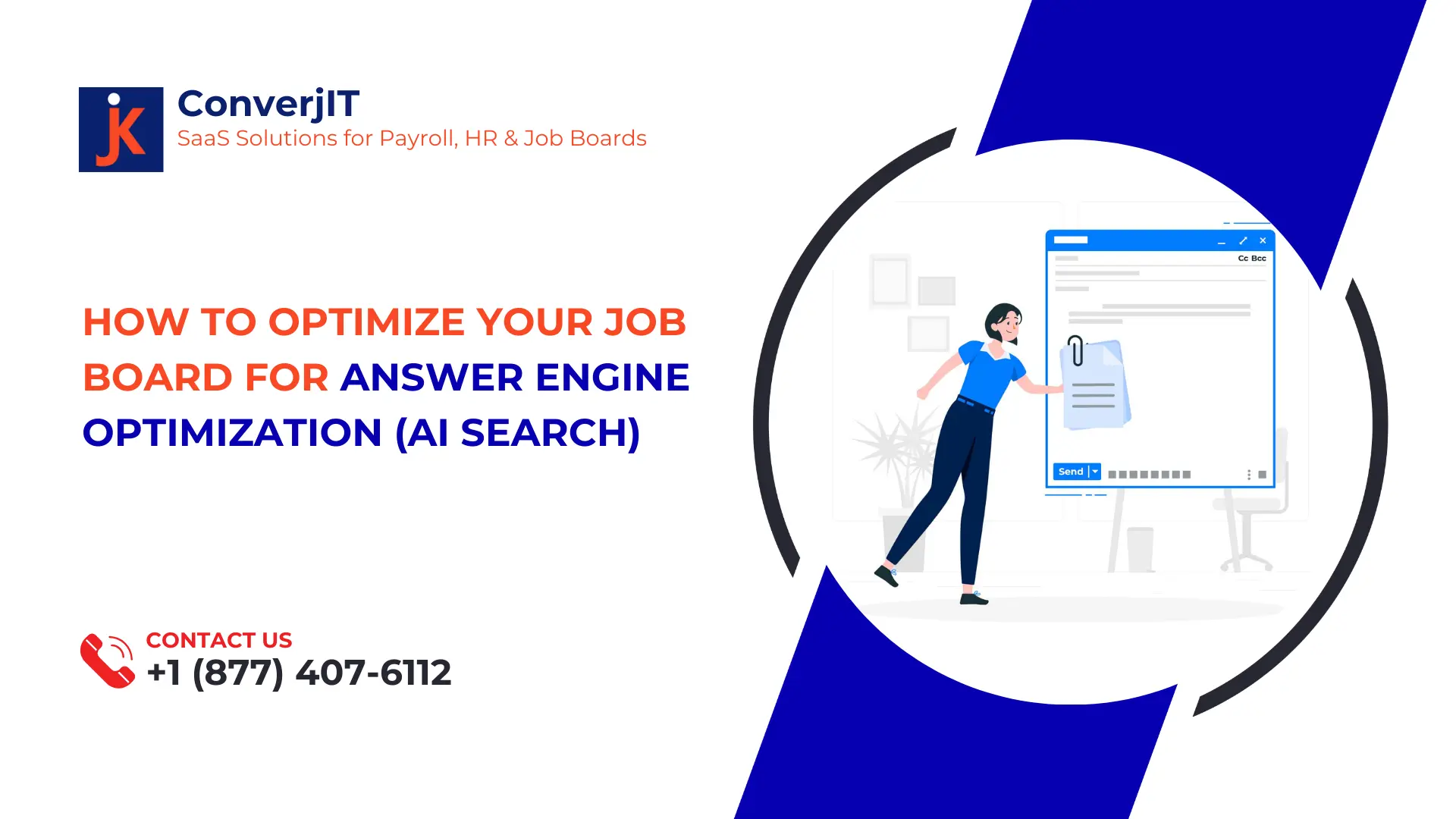In the world of corporate recruitment, job boards face a heavy challenge—keeping job listings update to date, accurate, and comprehensive. One modern technology quietly powering many of today’s most successful job boards is XML job feeds.
In general terms, an XML job feed is a structured file containing job listings, which can be automatically imported by job boards. Technically, it’s an XML (Extensible Markup Language) document that organizes job data using tags and attributes in a consistent schema.
With job industry shifting rapidly and competition growing fiercer in recruitment market, job boards often must process thousands, or tens of thousands, of job listings quickly and reliably. Manual methods or basic job scraping are no longer enough. XML job feeds offer scalability, automation, and accuracy that make them indispensable.
Here’s why XML job feeds aren’t optional anymore—they’re essential for job board success.
What Are XML Job Feeds?
An XML job feed is a file that delivers job postings in a structured format. It uses XML tags to define the fields of each job listing—such as title, location, description, salary, and posting date.
Here’s how it works technically:
- Each job listing is represented as an <job> node.
- Within each <job>, various fields (called elements or attributes) define the details.
XML Job Feeds vs. Scraping vs. API Integrations
| Method | Description | Pros | Cons |
| XML Job Feeds | Structured batch files with job listings in XML format | Scalable, reliable, easy to parse | One-way sync, slower for status updates |
| Scraping | Extracting jobs from web pages | No setup needed from partner, flexible | Risk of anti-bot blocks, messy data |
| API Integrations | Direct, real-time connections between systems | Two-way sync, instant updates | Complex integration, requires dev resources |
Common XML Formats or Standards
- HR-XML Consortium Standard (widely adopted in the industry)
- Google Jobs Schema (for Google Search visibility)
An Example of XML Job Feed Structure
<jobs>
<job>
<jobId>12345</jobId>
<title>Software Engineer</title>
<description>Develop web applications...</description>
<location>New York, NY</location>
<salary>100000</salary>
<datePosted>2025-07-01</datePosted>
</job>
</jobs> Why XML Feeds Are the Backbone of Job Board Data Acquisition (Powered by Smart Scraping)
Modern scraping solutions that generate XML feeds are now the gold standard for job boards that want to scale faster, stay competitive, and simplify operations. By using advanced scraping technologies to collect job data and convert it into XML feeds, job boards can tap into the best of both worlds: wide-reaching data acquisition and structured, easy-to-ingest formats.
Here’s why XML feeds powered by scraping are the true backbone of job board success.
Scalable Automation—Unlocking Data at Any Scale
Many job boards struggle with the limited scope of traditional XML feeds offered directly by employers or ATS systems. Most companies don’t provide feeds, or they limit them to certain jobs.
Scraping-based XML feed solutions solve this gap. With advanced scraping, job boards can automatically extract jobs from virtually any website, transform the data into a structured XML feed, and ingest thousands of listings at once.
This approach enables:
- Automated updates (daily, hourly, or even near real-time)
- Massive coverage across direct employers, staffing agencies, and niche job sites
- Reliable, hands-free job data acquisition without waiting on partners to provide feeds
Instead of being dependent on external XML feeds, job boards take control of their data pipeline—at scale.
Consistent, Clean Data—Structured by Design
One challenge with raw scraping is dealing with unstructured, messy data. But with the right scraping vendor, this challenge turns into an advantage.
By combining scraping with XML feed generation, the scraped data is automatically normalized and structured into clean XML format—ready for ingestion by your job board. Each listing includes all key fields like job title, location, description, salary, and posting date, following industry-standard schemas.
This approach ensures:
- Predictable, structured job data every time
- Easy mapping or enrichment to match to your job board categories and taxonomies
- Streamlined search, filtering, and analytics
With scraping-driven XML feeds, you get the coverage of scraping with the consistency of native XML feeds—without the usual headaches. Premium services will also provide complex enrichment to add data that is often missing from job postings, like categories or correct location data.
Faster Job Acquisition and Posting—Speed from Scraping to Feed
In recruitment, speed is vital. The longer it takes for a job to appear on your board, the higher the risk of losing applicants to competitors.
Scraping-powered XML feeds accelerate this process. As your scraping vendor continuously monitors and extracts job data, it’s transformed into an XML feed that your job board can automatically ingest.
The result:
- Jobs go live within hours, not days
- Automated sync means listings are always fresh
- Competitive advantage with faster job posting and SEO-friendly fresh content
This scraping-to-XML workflow keeps your job board ahead of the curve—without manual work or delays.
Evaluate your job sourcing strategy and consider how job scraping can accelerate your growth. Contact our team for a scraping strategy session or try our ROI calculator to estimate your potential gains.
Learn about Job Board ScrapingTechnical Benefits for Job Board Infrastructure (with Scraping-Powered XML Feeds)
Scraping-based XML feed solutions aren’t just about data collection—they also deliver significant technical advantages that optimize your job board’s infrastructure, streamline operations, and minimize resource overhead.
Here’s how scraping-powered XML feeds improve your platform’s technical efficiency:
System Efficiency and Load Optimization
Web scraping is often seen as resource-intensive—but when it’s handled by a dedicated scraping vendor that delivers structured XML feeds, your job board’s infrastructure stays light and efficient.
Instead of running large-scale crawlers on your own servers, the heavy lifting happens externally. You simply ingest a clean XML feed generated from advanced scraping.
This reduces:
- CPU and memory load on your servers
- Network traffic spikes
- Internal development costs for crawling and parsing
Your team gets job data without worrying about crawling complexities or system strain.
Reliable Error Handling and Quality Control
Scraping-powered XML feeds offer built-in error monitoring and diagnostics. Professional scraping solutions continuously validate the data during extraction and feed generation—automatically logging issues such as missing fields, outdated jobs, or formatting errors.
Key benefits include:
- Consistent, schema-compliant XML feeds
- Automated alerts for unusual data or site changes
- Clear logs for easy troubleshooting
- Filtering for irrelevant job titles / locations, before being added to your job board
This ensures high-quality, reliable job data feeds without requiring constant manual checks on your side.
Seamless Integration with Your Job Board Platform
XML feeds generated through scraping are designed to fit naturally into your existing job board workflows.
They easily integrate with:
- Applicant Tracking Systems (ATS)
- Custom job board software
- Programmatic job advertising platforms
Feeds can be delivered securely via SFTP, HTTP, or API endpoints—ready for instant ingestion and display on your site.
You get full control over scheduling, updates, and data flow—without worrying about the complexities behind the scenes.
Business-Level Benefits of XML Job Feeds (Generated from Scraping)
Scraping-powered XML feeds don’t just solve technical challenges—they unlock major business advantages for job boards looking to grow revenue, improve relationships, and stay compliant in competitive markets.
Stronger Employer and Partner Relationships
By using scraping to generate XML feeds, job boards can provide employers and recruitment partners with a smooth, automated way to feature their jobs—without requiring them to manually upload or send files.
Benefits include:
- More accurate, up-to-date job listings
- Minimal manual work for partners
- Greater control over how jobs appear on your board
This enhances your value as a partner and improves client retention.
Unlocking New Revenue Opportunities via Syndication
Scraping-powered XML feeds also enable powerful monetization strategies. You can use these feeds to:
- Syndicate jobs to external partner sites
- Enable programmatic job distribution
- Run CPC, CPA, or performance-based advertising models
With accurate, structured feeds, you can easily track campaigns using UTM parameters or job-specific IDs—creating new, scalable revenue streams.
Compliance and Traceability Across Markets
For job boards operating in regulated markets, scraping-powered XML feeds offer valuable compliance advantages.
Every job listing in your XML feed can be timestamped and archived, creating a clear audit trail of job posting history—critical for regions with strict employment transparency laws.
Benefits include:
- Proof of job posting dates and updates
- Transparent listing histories for audits
- Legal compliance with hiring regulations in regions like the EU or Canada
SEO and Visibility Advantages
- XML feeds help structure your job board content for Google Jobs and other search engines.
- Better indexing = Higher organic traffic.
- Jobs appear with rich snippets, improving click-through rates.
- Compliance with Google’s Job Posting Structured Data Guidelines ensures maximum visibility.
Best Practices for Implementing XML Job Feeds
- Namespaces & Validation: Always validate XML feeds using XSD (XML Schema Definition).
- Unique Job IDs: Prevent duplication and enable precise job management.
- Canonical URLs: Avoid duplicate content penalties.
- Standardized Job Types & Categories: Use common taxonomies for better integration.
- Timezone-Aware Timestamps: Ensure consistency in job posting and expiration dates.
- Hosting Tips: Use a CDN with versioned endpoints for reliability and faster access.
Alternatives and Limitations
When APIs May Be Preferable
- Need two-way communication (apply status, job closing).
- Real-time job updates beyond daily/hourly batches.
- When job board storage limits become a cost issue, querying job database via API reduces/eliminates storage costs.
Limitations of XML Feeds
- One-way sync only.
- Typically batch-based (not ideal for live status updates).
Hybrid Models
- XML feeds for bulk ingestion.
- API callbacks for real-time actions like application status, job closures.
Conclusion: Scraping + XML Feeds = Winning Formula
The future of job data acquisition isn’t about choosing between scraping and XML feeds—it’s about combining them.
By using advanced scraping solutions that produce clean, structured XML feeds, job boards gain:
- Maximum job coverage
- Clean, structured, ready-to-ingest data
- Automated, scalable workflows that save time and costs
This model empowers job boards to focus on growth, monetization, and delivering value to job seekers—while the scraping engine works behind the scenes to fuel the platform.





